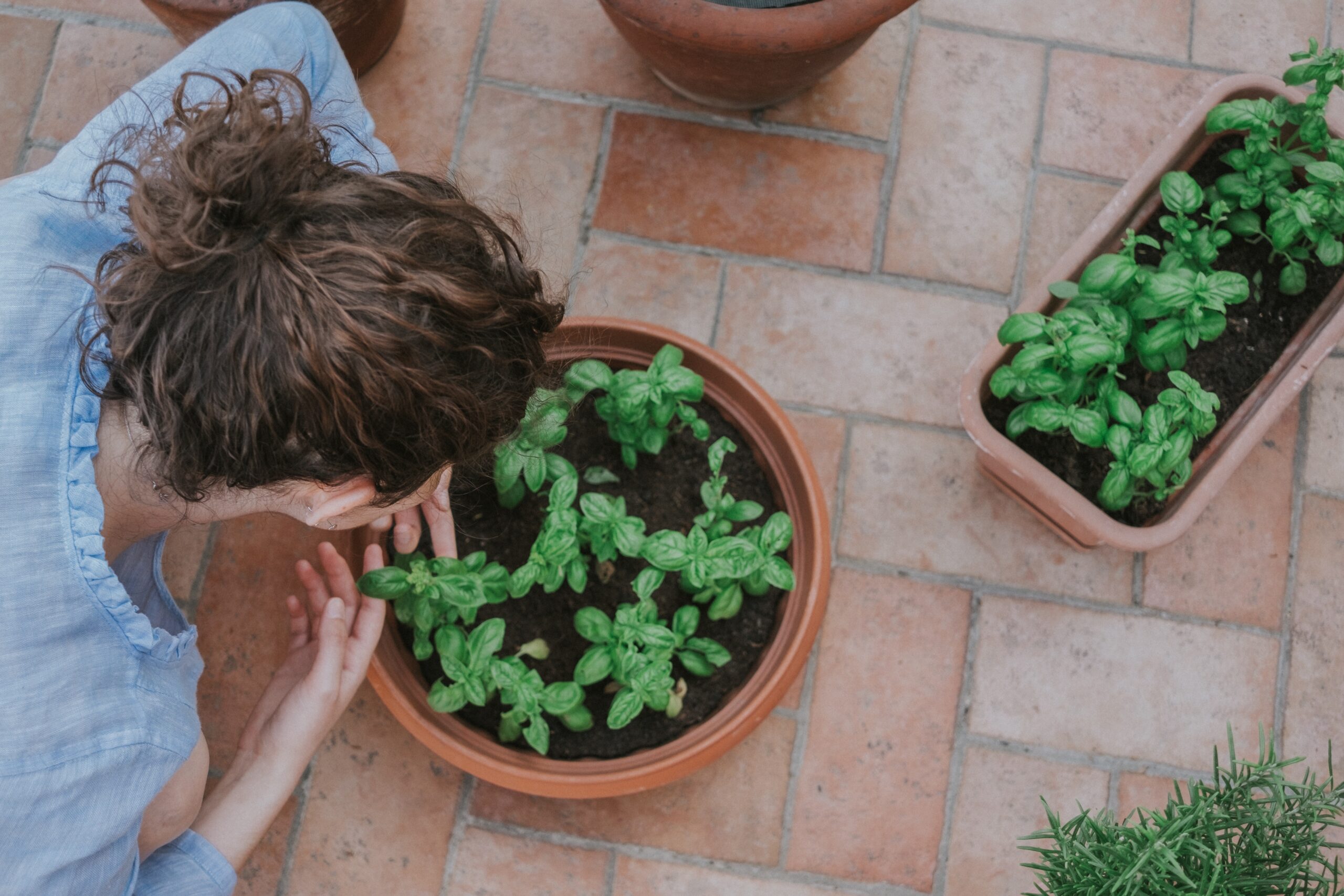Spread the Basil Around
Soaking in the sun and getting dirty under a bright blue sky…it’s part of what summer’s all about. Growing herbs is a great way to engage in a peaceful outdoor summer activity every day, and basil is one of the easiest herbs you can grow. Whether you have a goal in mind of making a signature batch of pesto, or you simply enjoy the pleasant aroma, growing basil gets you out of the house and having fun in the sun every day.
The especially nice thing about basil, as well as some other herbs, is that you can buy one plant and have that same plant produce basil for years. You can also share your basil with friends and family, gifting them a plant of their own at no cost to you or them. You do this by propagating basil from the cuttings of your plant.
Basil is an annual herb, meaning it will only last for one season. But rules were meant to be broken! If you propagate your basil from cuttings, you can have basil in your home or garden year-round. Growing basil from cuttings indoors during the winter months only takes a sunny windowsill or a small indoor grow light.
To begin the process of propagating basil, you first have to “top” the plant, or trim it. Topping a basil plant doesn’t harm it as long as you don’t take too many leaves away. On the contrary, people are encouraged to top basil plants as they grow so the plants have an opportunity to develop a bushier shape, which generally produces a larger abundance of delicious basil leaves.
When topping a basil plant to propagate from cuttings, make sure to trim off a stem that’s at least 3 inches long. Take that stem and trim off all the lower leaves, leaving only 4–6 bigger leaves at the very top. Those excess leaves are perfect for a pasta or pizza topping, or even some delightful bruschetta snacks!
An optional next step is to carefully strip away some of the outer plant material from the bottom of the stem like you’re stripping a wire. This encourages more root tendrils to grow out while your basil cuttings are rooting in water. Do be cautious, however, not to strip away too much. It only takes a few shavings to help it out and, again, this step is completely optional.
Next, put your basil cuttings in a container with water. A small jar is fantastic if the cuttings can stand up on their own, but if you don’t have a jar that works, you can take a shallow container and put parchment paper over the top. Secure the parchment paper to the container with tape or rubber bands, then poke small holes into the parchment paper just big enough to put your basil cuttings through. They should now be able to stand with the assistance of the parchment paper holding them up.

Make sure the water level in whichever type of container you use covers the entire bottom half of your stems. It’s also a good idea to drain and replenish the water every 4 days or so to make sure it’s fresh and no bacteria starts proliferating while you propagate your basil from cuttings. Bacteria can breed in your container in this phase, and it will ruin your chances of propagating a new plant from cuttings, so keep the water fresh to protect your plant.
Keep your basil cuttings in an area that gets bright but indirect sunlight for at least 6 hours a day, more if possible. Basil cuttings store quite like flowers do indoors, and they’re perfectly content for some time if they merely have enough light and water. You can also keep newly harvested basil fresh for days by utilizing this method to store it.
Once your basil cuttings have developed roots 2 inches long or more with healthy-looking root tendrils they’re ready for transplant. The process takes about 2 weeks on average, though I’ve personally gone 3 and even 4 weeks of letting the roots grow out in this manner and they did great! You can continue to propagate the basil from cuttings either in pots indoors, or out in your garden once the risk of frost has passed.
When planting your basil cuttings into the soil it’s important to ensure the roots are going down as straight as possible. Bunching up the roots when you’re planting your basil from cuttings can cause problems as the plant begins to get acclimated to the soil. Simply measure how long your roots are and make sure you’re planting them deep enough so the roots have room to breathe and grow.
During the first few weeks after you transplant your basil cuttings to the soil you want to keep the soil damp, but not soggy. The basil is just getting used to collecting nutrients from the soil after getting everything it needed from water alone for weeks. Plants in containers can dry out faster than those planted in soil, and you certainly don’t want to shock your new plants by dehydrating them but resist the urge to over-water so they adjust to the soil.
Plant 3–4 cuttings in a modestly sized pot and, with that, you have a whole new basil plant! You can ensure you have fresh basil on hand all year for all your culinary creations. Better yet, give someone you know a fresh basil plant to brighten up their day! The sweet, uplifting aroma of fresh basil is a welcoming scent people love.
To propagate basil from cuttings you don’t need any special equipment or fancy tools. A container, water, light, and soil; that’s all it requires. If you don’t want to go through the process of propagating basil from cuttings but you know someone interested in doing it themselves, simply hand them a few cuttings from your plant the next time they drop by your house and let them know how easy the process is. Spread the basil love around to all your friends and teach them how to propagate basil from cuttings so they too can have fresh, tasty basil all year long!








